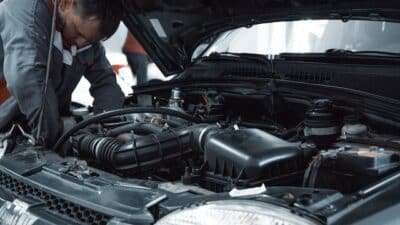Many drivers skim policy papers, then feel unsure at claim time. Clarity begins with the basics: what a car insurance policy promises to pay, and the limits around those promises. Read the official schedule and the policy wording together, not in isolation.
This guide explains what is usually covered, what is not, and how to read the fine print with confidence.
Why Car Insurance Policy Matters in India
A Car Insurance Policy is a contract between the owner and the insurer. It lists the insured vehicle, the period of cover, the premium, and the benefits tied to defined events.
Indian motorists value quick repairs, cashless payment options, and protection against large bills. None of that works without understanding the scope and limits recorded in the documents.
How to Read the Schedule and Wordings
Start with the schedule. Confirm chassis and engine numbers, registration, IDV, add-ons, deductibles, and voluntary excess. Then turn to the policy wording. Focus on definitions, coverage sections, general conditions, and claim procedures. Look for duties after an accident, such as immediate notification, filing an FIR where required, and cooperation with surveys.
Check the geographical area, permitted use, and named drivers if applicable. Note sub limits for glass, tyres, and accessories. Review how depreciation is applied to plastic, rubber, and metal, as this affects out-of-pocket repair costs.
What Typically Falls Under Policy Inclusions
The phrase policy inclusions refers to the events and costs the insurer agrees to cover. Typical inclusions are accidental damage to the vehicle, fire, explosion, self-ignition, lightning, theft of the car, and natural perils such as flood or cyclone. Many policies include personal accident cover for the owner-driver up to a stated limit.
Where Car Insurance Coverage Usually Applies
In most comprehensive plans, the Car Insurance Policy extends to the vehicle’s standard fitments, subject to depreciation as per the schedule. Repairs at network garages are usually settled on a cashless basis, while non-network bills are reimbursed up to assessed amounts. Towing within specified limits is often included.
Common Policy Exclusions to Watch
Every contract lists policy exclusions that remove certain risks from the scope. Common examples include normal wear and tear, mechanical or electrical failures without an accident, driving without a valid licence, drunk driving, deliberate acts, and racing. Consequential loss is also commonly excluded.
Third-Party Car Insurance at a Glance
Liability to third parties is compulsory in India. Third party car insurance covers legal liability for injury, death, or property damage to others caused by the insured vehicle. It does not pay for repairs to the policyholder’s own car. Comprehensive plans add their own damage cover on top of the mandatory liability section.
Add-ons That Can Fill The Gaps
Insurers offer optional riders that address common pain points. Zero depreciation reduces the effect of part-wise depreciation on approved claims. Return to invoice can bridge the gap between IDV and the on-road price in total loss or theft, subject to conditions.
Engine protection and consumables cover help after specific types of damage. Roadside assistance offers towing, battery jump-starts, and minor on-site fixes.
Claim Scenarios: What Gets Paid and What Does Not
A minor collision that dents the bumper is usually covered, subject to deductibles and depreciation. Rainwater entering the engine and causing hydrostatic lock may be rejected if the car was driven through deep water against advice, unless an engine add-on is in force.
Theft is payable if keys were secured and police procedures were followed. A claim can be curtailed when accessories not declared in the schedule are damaged. If a driver is unlicensed at the time of loss, liability for others may still arise under the law, but own damage is not payable under standard terms.
Practical Checklist Before Buying or Renewing
Here is the practical checklist before buying or renewing:
- Compare IDV, not only the premium.
- Read deductibles and voluntary excess in numbers.
- Review add-ons based on the vehicle’s age and city usage.
- Check network garages near home and office.
- Disclose previous claims and modifications truthfully.
- Keep copies of RC, licence, and policy documents in the glovebox and on the phone.
- Save claim helpline numbers for quick intimation.
How to Avoid Unpleasant Surprises
Report incidents quickly, follow the surveyor’s instructions, and share accurate information. Do not begin major repairs without approval. Preserve damaged parts until the survey is complete. For small dents below the deductible, consider paying out of pocket to preserve the no-claim bonus. Store photos of the scene, the licence, and the odometer reading.
Closing Note
Understanding the structure of cover, add-ons, and limits helps motorists choose well and claim smoothly. Each insurer’s terms differ, so always rely on the latest documents issued for the vehicle. Keep documents current.







